Posted on January 31, 2013
An Interview with Artist Taylor Deupree Taylor Deupree is a sound artist, graphic designer and photographer. He has founded the record label, 12k, in 1997 and since then, it has gained an international following by providing a platform for electronic musicians, composers and sound artists to experiment with conceptual music. Deupree approaches his sound work in the fashion of a minimalist, emphasizing a hybrid of natural sounds and technological meditation, with no hint of digital idolatry. His work, Thursdays, is included in the ICI exhibition With Hidden Noise. Mengyin Lin: How did you start getting involved with experimental sound? And how did you get to know Stephen Vitiello, the curator of With Hidden Noise? Taylor Deupree: I decided, over 25 years ago, that I wanted to be a musician, and do electronic-based music. So really, most of my life has been devoted to listening to and exploring sound and music. I think my interest in visual arts, as a photographer and graphic designer has made those different worlds combine into something unique. My sound art and visual art very much parallel to each other. My aesthetics and tastes really aren’t terribly typical so it was only natural for me to explore the more experimental side of art. Stephen and I met for the first time via the Internet when sound artist Rutger Zuydervelt (Machinefabriek) reached out to me about a collaboration he had done with Stephen and wanted to release on 12k. The album was called Box Music and it came out in 2008. Probably not too long after that Stephen and I met in New York City and became friends in person. We kept in very regular contact since then and see each other quite a bit. ML: Your work in With Hidden Noise, Thursdays, is a composition of field recordings, some are very personal and specific, such as a little boy singing Happy Birthday song at the beginning, and sound of footsteps, which can be very personal as well, as we often know someone’s approaching before their arrival by listening to their characteristic footsteps; at the same time, there are sounds of instrumental sound like acoustic guitar as well as electronic/synthetic sound. Some could fall better into the traditional category of music, and others may be considered as noise by the majority. What does it mean to you as the artist to bring all these sounds together – and what role does the difference in soundscape play here? TD: This piece was made from a sound project I made in 2009 where I recorded a sound every day of the year. These were usually field recordings. Outside with a microphone; nature, my travels, etc., but sometimes Id construct sounds as well (playing on guitar or in the studio)
Thursdays is, literally, a montage and layers of sounds I recorded on every Thursday of that year. The selection of sounds was then determined only by Thursdays so whatever sound fell on those days was what went into the composition. The day selection (Thursday) is homage to my favorite piece of music, Thursday Afternoon by Brian Eno. The yearly project as a whole is a look at my life and where I went, an audio diary of sorts, and Thursdays is a slice of that that combines the sounds of my every day life: music, people, nature. It can appear to a quick listen as a jumble of random sounds but there are relationships and combinations that will stir up memories for any listener. Familiar sounds, hints of this or that; the piece serves, also, as an audio diary, how sounds work into our every day lives. ML: Do you have your own archive of sounds that you draw on to create a new piece, or you conceive an idea for a work first and then go out and record particular sounds you had in mind? What is your creative process to produce a sound artwork? TD: It’s definitely a bit of both. I’m always recording sounds or making sounds on synthesizers and creating banks and archives to serve as compositional starting points later on. When it comes time to compose a new piece sometimes Ill draw from that archive if it sounds particular inspirational at that moment. This year, actually, Im starting a new per-day project, which is a studio diary. Whereas my 2009 sound-per-day project were, for the most part, field recordings, this years project is all constructed sounds from inside my studio. Not only will it serve as a great learning and exploring experience but Ill generate a huge body of sounds to draw from as well. I started it a week late due to busy holidays, but it can be found here: http://www.soundcloud.com/12k ML: I find a lot of the sounds in Thursdays very visual. Take the footsteps at the beginning as an example. They are steady, a little rushed, but not very heavy, which might suggest a particular emotional status. And it sounds like walking in the late fall or winter in the woods, when fallen leaves become dry and crunchy, which gives a context of the time, setting and location of this particular sound. But this is just how I picture it, I am sure audiences would have different visions based on their own life experiences. I think it’s the ability to recognize the sound that generates a vivid, lively visual, and then I noticed that you are also a photographer. As photo is sometimes used to freeze a moment, music and sound requires time and space to produce an experience. Do you see a relationship between the visual and the aural in your process of producing sounds? TD: Yes, there is absolutely a connection. One of my practices in music production is what I call freezing time. Its not the literal technological technique of time stretching or time compressing sound, but more an idea involving loops and repetition. My music often involves series of loops that fall in and out of phase of each other and create this sort of churning bed that at once sounds repetitive but is always slightly changing. It gives the sense of being stuck in a loop, a moment in time, much like a photograph. And, also like a photograph, the myriad of details and perspectives within this looping bed of sound give the listener a very deep picture with many sounds and tangents to explore. I think also, growing up as a photographer and a musician side by side, the sounds that I find for my music just naturally tend to be quite visual and contextual. I think you can also say that some of my photography is quite musical and lyrical as well. 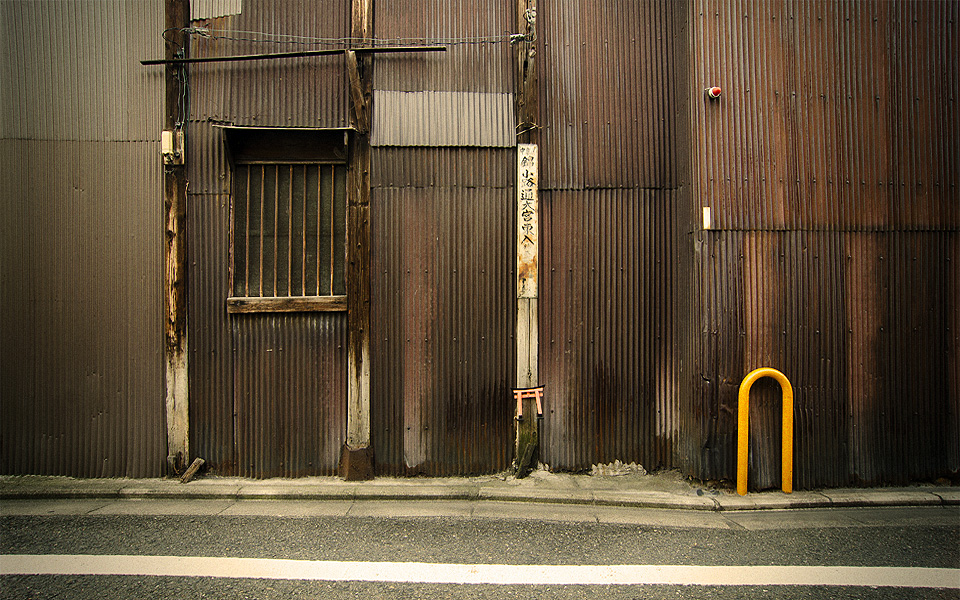 Taylor Deupree, Facade, Kyoto, 2012.
Taylor Deupree, Facade, Kyoto, 2012.
 Taylor Deupree, Winter Court, 2012. ML: Compared to other works in With Hidden Noise, your piece is relatively intimate and personal. What do you think of the capacity of sound to tell personal stories, to portray a specific time and place, and how does this personal experience transcend itself and transform into an work of art to a general audience? TD: I find my work to be very non-narrative, at least when I’m writing it. To me my music has no beginning or end; it’s like a street with “do not enter” signs on either end. You get in somehow and once you’re in you’re not sure where to go. Despite the linearity of music as an art form I try to make my music very non-linear. It sort of exists in this place where it can go on forever. I think of my music as being vertical, stacks, and layers, as opposed to a horizontal timeline. All that being said, I think just by the nature of the kind of sounds I use and the subtleties and quiet sounds that it can be quite enveloping when you listen to it, and with that comes a feeling of intimacy and with that comes some sort of made-up story or narrative. So its quite paradoxical in that way
starting out writing something very non-narrative and it ends up being able to make the listener feel a sense of place or memory or perhaps a particular time/story in their own life. ML: Your work has been developing from techno, electronic sound to a hybrid of natural sound, field recordings, etc. for over almost 20 years. After so many years of experimenting with sound, do you still see what you do as an experiment and if so, what is this experiment now as opposed to when you started making work 20 years ago? What is still exciting in your creative process? TD: Over 20 years ago when I decided I wanted to do this for a living I just jumped in with my first synthesizer and piles of books and magazines. It was all new and there was so much to learn. Music synthesizers, in the early/mid 80s were also relatively new at least in terms of being affordable for the masses. Digital sampling was becoming affordable, digital synthesizers, and then computers and software began to be developed for music. My learning and experiments were developing alongside the technology itself. When something new would be invented, or some new technology unveiled for music production, I was there learning it, taking it in. It was constant experimentation. I became incredibly interested in different sound synthesis methods. The way various synthesizers worked and how they created their unique sounds. It also goes without saying that recording in general, the techniques of mixing, producing and recording sound
well, you can never know all of it. There is always something new to learn and discover. This is what keeps it still exciting after all of these years, and, in fact, more exciting now than it has ever been. There is so much technology for sound, so many options and infinite ways to create and process any sound you can imagine. In fact, there are too many options, too many choices, too much to get in the way of productivity. So I really try to impose restrictions and rules on myself as I’m creating so I don’t get mired in too many options. Even with self-imposed restrictions my explorations are endlessly fascinating and keep pushing me in new directions. For the past few years I’ve really been moving away from the computer as an instrument, too — something that was so instrumental in the mid/late 90s experimental music scene. But I’m finding that computer-based instruments, software instruments, lack soul. I’m much more interested in hands-on electronic instruments and acoustic instruments, physical and tactile interfaces. It’s this ever-evolving interest in tools for creating sound that fuel the experimental process. If i haven’t used it before, it’s new and exciting. Guitars may not be new, but when I first started incorporating them into my music less than 10 years ago it was an entire world opening up to me. ML: As a current student in Tisch, Im surrounded by a lot very talented and bold young artists, who are great inspirations to me. And I really appreciate that I get to study in New York, one of the best places for art. What was your experience studying art in New York City and what was the experimental sound scene like when you were a student? What influenced you from your experience as an art student? TD: I went to NYU (for Photography) specifically because it was in New York. I was less concerned about the school itself than I was the fact that it was in New York. Its where I wanted to be, where I felt I had to be and I think it shaped me and gave me opportunities that have gotten me to where I am today. In those years, the early 90s, was the beginning of the techno scene in America coming out of the amazing late 80s acid house and club music from the UK and Chicago. I spent every weekend at clubs soaking in the music and eventually playing at the same clubs I used to frequent. It was the birth of the rave scene. It was wild and electronic dance music was exploding and new genres and styles splintering off as fast as people could name them. Thinking back to it, it was really pretty intense and incredibly energetic. As much as I loved the Photography Department at NYU, the rest of my school experience is a complete blur. Im not even quite sure how I managed to get my degree without taking many tests or demanding courses. Its not that I didn’t care about school but I spent every free moment either in my apartment writing music, out a club listening to music or at record stores buying music. School was just an excuse to be in New York City and the Photography Department was my home outside of my apartment. I guess back then New York City itself was all that was influencing me. The music culture for sure but also the energy, the museums and my photography and (then very early) computer art classes. But not too long after I graduated my artistic direction really changed. I was introduced, by a dear friend, to modern architecture and design, furniture, interiors, minimalism. It was discovering the works of people like Donald Judd and Hiroshi Sugimoto that changed my art forever. I saw in these works a rhythm that I was familiar with from my career in techno music: a steady pulse, divisions. But I also saw space, silence and organization, whether it was rigid or organic. This had an incredible effect on my music, which took a turn from something made for the club to something that could be made for the art galleries. At the time it was still very synthetic and often rhythmic, but I was attempting to capture that idea of space and timelessness that I saw in minimalist art. Those are the foundations that are still at the heart of what I do today, although they’ve been molded and matured by the years and by my interest in things more imperfect, decayed and organic. But there is this clear arc from the fierce synthetic rhythms of techno into the pure forms and space of minimalism and then roughed around the edges by nature and time. These distinct influences and eras of my music have slowly, gradually morphed and echoes of all of them still play around in what I do. ***Mengyin Lin is currently an Exhibitions Intern at ICI. She is a senior in New York University double majoring in Film/TV Production and Art History.
Taylor Deupree, Winter Court, 2012. ML: Compared to other works in With Hidden Noise, your piece is relatively intimate and personal. What do you think of the capacity of sound to tell personal stories, to portray a specific time and place, and how does this personal experience transcend itself and transform into an work of art to a general audience? TD: I find my work to be very non-narrative, at least when I’m writing it. To me my music has no beginning or end; it’s like a street with “do not enter” signs on either end. You get in somehow and once you’re in you’re not sure where to go. Despite the linearity of music as an art form I try to make my music very non-linear. It sort of exists in this place where it can go on forever. I think of my music as being vertical, stacks, and layers, as opposed to a horizontal timeline. All that being said, I think just by the nature of the kind of sounds I use and the subtleties and quiet sounds that it can be quite enveloping when you listen to it, and with that comes a feeling of intimacy and with that comes some sort of made-up story or narrative. So its quite paradoxical in that way
starting out writing something very non-narrative and it ends up being able to make the listener feel a sense of place or memory or perhaps a particular time/story in their own life. ML: Your work has been developing from techno, electronic sound to a hybrid of natural sound, field recordings, etc. for over almost 20 years. After so many years of experimenting with sound, do you still see what you do as an experiment and if so, what is this experiment now as opposed to when you started making work 20 years ago? What is still exciting in your creative process? TD: Over 20 years ago when I decided I wanted to do this for a living I just jumped in with my first synthesizer and piles of books and magazines. It was all new and there was so much to learn. Music synthesizers, in the early/mid 80s were also relatively new at least in terms of being affordable for the masses. Digital sampling was becoming affordable, digital synthesizers, and then computers and software began to be developed for music. My learning and experiments were developing alongside the technology itself. When something new would be invented, or some new technology unveiled for music production, I was there learning it, taking it in. It was constant experimentation. I became incredibly interested in different sound synthesis methods. The way various synthesizers worked and how they created their unique sounds. It also goes without saying that recording in general, the techniques of mixing, producing and recording sound
well, you can never know all of it. There is always something new to learn and discover. This is what keeps it still exciting after all of these years, and, in fact, more exciting now than it has ever been. There is so much technology for sound, so many options and infinite ways to create and process any sound you can imagine. In fact, there are too many options, too many choices, too much to get in the way of productivity. So I really try to impose restrictions and rules on myself as I’m creating so I don’t get mired in too many options. Even with self-imposed restrictions my explorations are endlessly fascinating and keep pushing me in new directions. For the past few years I’ve really been moving away from the computer as an instrument, too — something that was so instrumental in the mid/late 90s experimental music scene. But I’m finding that computer-based instruments, software instruments, lack soul. I’m much more interested in hands-on electronic instruments and acoustic instruments, physical and tactile interfaces. It’s this ever-evolving interest in tools for creating sound that fuel the experimental process. If i haven’t used it before, it’s new and exciting. Guitars may not be new, but when I first started incorporating them into my music less than 10 years ago it was an entire world opening up to me. ML: As a current student in Tisch, Im surrounded by a lot very talented and bold young artists, who are great inspirations to me. And I really appreciate that I get to study in New York, one of the best places for art. What was your experience studying art in New York City and what was the experimental sound scene like when you were a student? What influenced you from your experience as an art student? TD: I went to NYU (for Photography) specifically because it was in New York. I was less concerned about the school itself than I was the fact that it was in New York. Its where I wanted to be, where I felt I had to be and I think it shaped me and gave me opportunities that have gotten me to where I am today. In those years, the early 90s, was the beginning of the techno scene in America coming out of the amazing late 80s acid house and club music from the UK and Chicago. I spent every weekend at clubs soaking in the music and eventually playing at the same clubs I used to frequent. It was the birth of the rave scene. It was wild and electronic dance music was exploding and new genres and styles splintering off as fast as people could name them. Thinking back to it, it was really pretty intense and incredibly energetic. As much as I loved the Photography Department at NYU, the rest of my school experience is a complete blur. Im not even quite sure how I managed to get my degree without taking many tests or demanding courses. Its not that I didn’t care about school but I spent every free moment either in my apartment writing music, out a club listening to music or at record stores buying music. School was just an excuse to be in New York City and the Photography Department was my home outside of my apartment. I guess back then New York City itself was all that was influencing me. The music culture for sure but also the energy, the museums and my photography and (then very early) computer art classes. But not too long after I graduated my artistic direction really changed. I was introduced, by a dear friend, to modern architecture and design, furniture, interiors, minimalism. It was discovering the works of people like Donald Judd and Hiroshi Sugimoto that changed my art forever. I saw in these works a rhythm that I was familiar with from my career in techno music: a steady pulse, divisions. But I also saw space, silence and organization, whether it was rigid or organic. This had an incredible effect on my music, which took a turn from something made for the club to something that could be made for the art galleries. At the time it was still very synthetic and often rhythmic, but I was attempting to capture that idea of space and timelessness that I saw in minimalist art. Those are the foundations that are still at the heart of what I do today, although they’ve been molded and matured by the years and by my interest in things more imperfect, decayed and organic. But there is this clear arc from the fierce synthetic rhythms of techno into the pure forms and space of minimalism and then roughed around the edges by nature and time. These distinct influences and eras of my music have slowly, gradually morphed and echoes of all of them still play around in what I do. ***Mengyin Lin is currently an Exhibitions Intern at ICI. She is a senior in New York University double majoring in Film/TV Production and Art History.
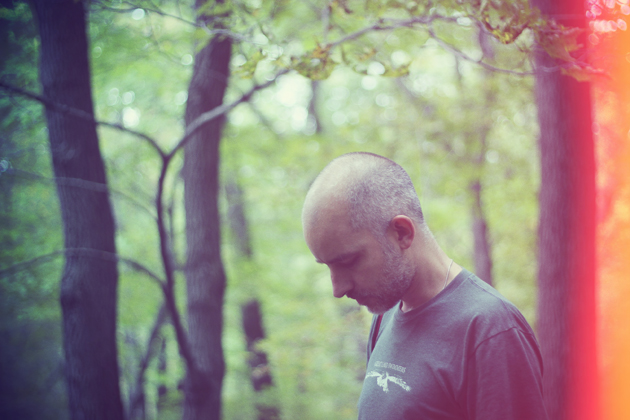




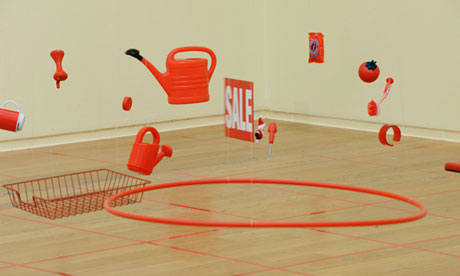
 From
From 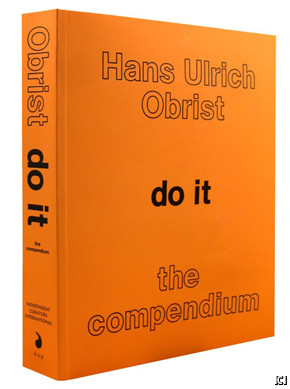 From
From  From
From 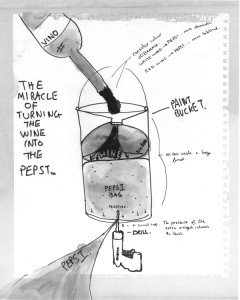





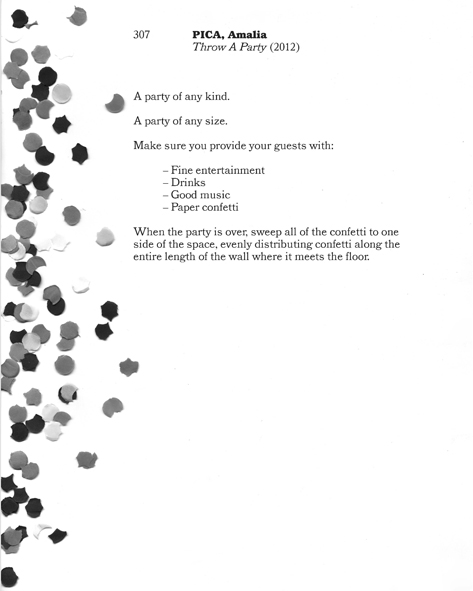


 MU Art Space
MU Art Space